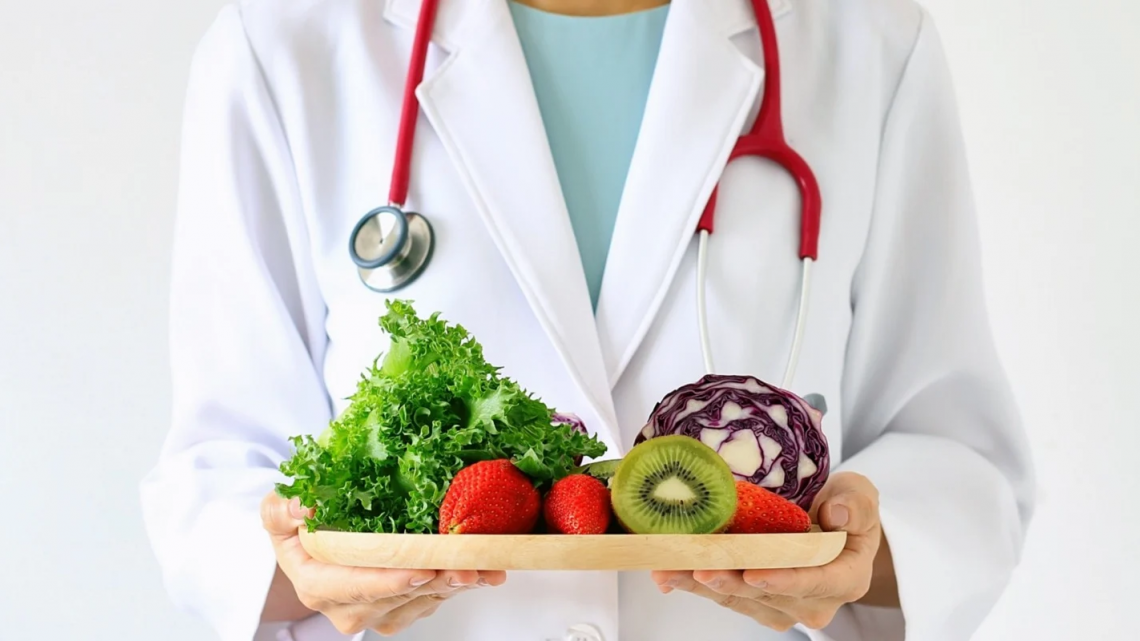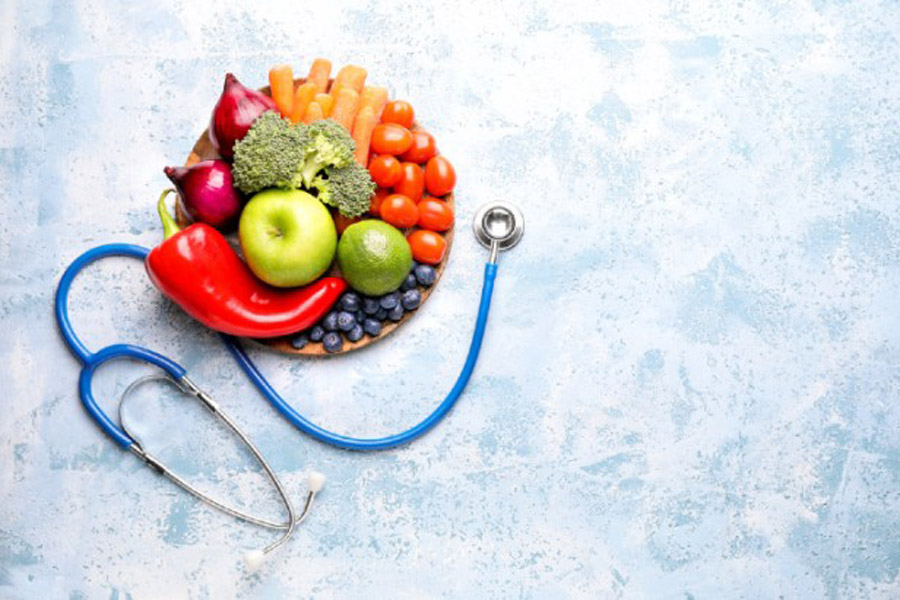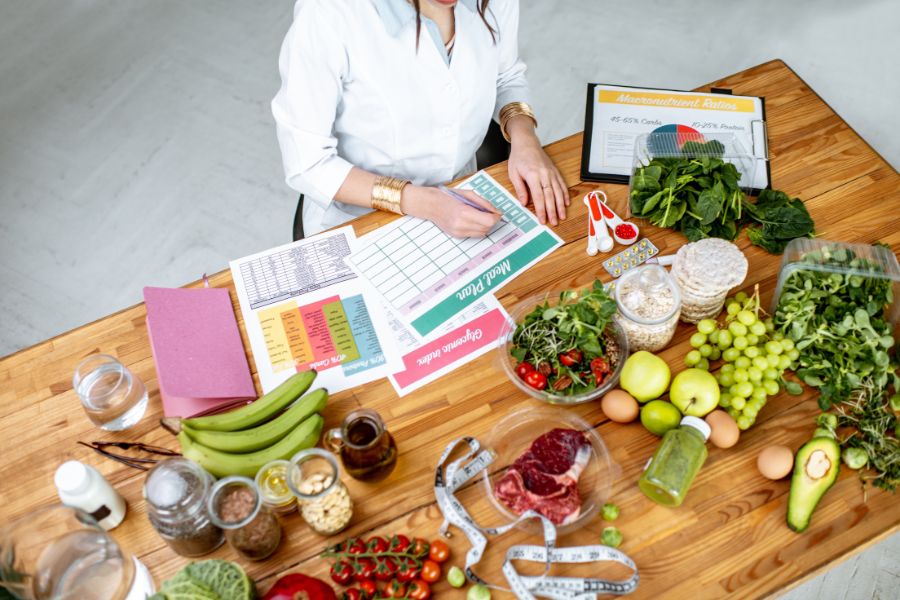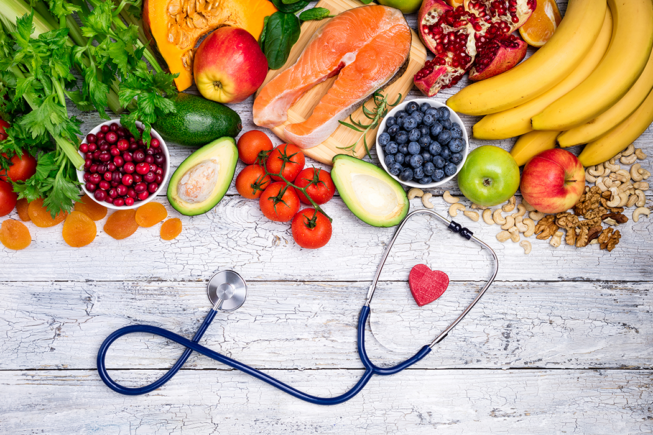ΙΑΤΡΙΚΗ ΜΑΓΕΙΡΙΚΗ: Η ΤΡΟΦΗ ΕΙΝΑΙ ΤΟ ΦΑΡΜΑΚΟ ΣΟΥ

Φαντάσου κάθε φορά που επισκέπτεσαι τον οικογενειακό σου γιατρό να είναι εκπαιδευμένος διατροφικά ώστε να μπορέσει να σε συμβουλέψει για τη σχέση της υγείας σου με τη διατροφή σου. Παράλληλα, να έχεις ένα σύμμαχο διαιτολόγο που θα σε καθοδηγεί για το πώς θα μαγειρέψεις ορισμένα τρόφιμα στο σπίτι. Οι συνταγές θα είναι προσαρμοσμένες στις προσωπικές σου ανάγκες και, καθώς οι διατροφολόγοι και οι γιατροί έχουν εκπαιδευτεί πια να λειτουργούν ως ομάδα, θα έχεις τους "προπονητές της υγείας σου" που θα σε βοηθήσουν να εφαρμόσεις με επιτυχία αυτό το νέο σχέδιο. Το σενάριο αυτό ακούγεται απίστευτο, αποτελεί όμως τη νέα τάση στο εξωτερικό και ονομάζεται μαγειρική ιατρική.(1)
Ουσιαστικά, η ιατρική μαγειρική είναι ένα νέο, επιστημονικά τεκμηριωμένο πεδίο της ιατρικής που μπλέκει την τέχνη του φαγητού και της μαγειρικής με την επιστήμη της ιατρικής (2). Αναδύθηκε για πολλούς λόγους, από την ανάγκη του κόσμου να τρώει εκτός σπιτιού, από την προβολή του φαγητού και της μαγειρικής από τα μέσα, από τις συχνά αντικρουόμενες διατροφικές συμβουλές, από την αναποτελεσματικότητα των συμβατικών ιατρικών πρακτικών σε χρόνιες ασθένειες, από την άνοδο ολιστικών θεραπειών και της στροφής στα βιολογικά τρόφιμα, από την εξάπλωση των επεξεργασμένων τροφών, αλλά και από την αύξηση του κόστους της υγειονομικής περίθαλψης.
Στόχος της είναι να βοηθήσει τους ανθρώπους να πάρουν σωστές προσωπικές ιατρικές αποφάσεις όσον αφορά υψηλής ποιότητας γεύματα και να συμβάλλει στην πρόληψη και θεραπεία ασθενειών. Στο πλαίσιο της ιατρικής μαγειρικής, απαντάται το ερώτημα «τι πρέπει να τρώω με βάση την πάθησή μου» και όπως είναι ξεκάθαρο, διαφορετικές κλινικές παθήσεις απαιτούν διαφορετικά γεύματα, τρόφιμα και ποτά, με σκοπό τη βελτίωση.

Ιδιαίτερη προσοχή δίνεται στο πώς η τροφή λειτουργεί στον οργανισμό, όπως και στις κοινωνικοπολιτισμικές εκφάνσεις του φαγητού και της μαγειρικής, και την απόλαυση αυτών. Έτσι ο ασθενής μπορεί να αντλήσει τη δύναμη και τη θέληση να φροντίσει τον εαυτό του με ασφάλεια και αποτελεσματικά, μέσω των τροφίμων και ροφημάτων που θα τον βοηθήσουν.
Κάποια διατροφικά πρότυπα, μάλιστα, έχει φανεί ότι είναι πιο αποτελεσματικά για κάποιες παθήσεις, όπως η αντιφλεγμονώδης διατροφή για τη ρευματοειδή αρθρίτιδα (3) και η μεσογειακή διατροφή για καρδιαγγειακές παθήσεις (4), για τον προχωρημένο καρκίνο του παχέος εντέρου (5) και τον διαβήτη τύπου 2 (6). Κάποιες τροφές έχει αποδειχτεί, επίσης, ότι είναι αποτελεσματικές, όπως τα όσπρια για τη μείωση της χοληστερίνης (7), οι καρποί σόγιας για την υπέρταση (8) κ.ά.
Η ιατρική μαγειρική αποτελεί ήδη μέρος εκπαιδευτικού προγράμματος σε αμερικανικές ιατρικές σχολές από το 2003, ενώ το πρώτο κέντρο ιατρικής μαγειρικής άνοιξε το 2013 στο Πανεπιστήμιο Tulane στη Νέα Ορλεάνη κι έκτοτε, κάποιες ιατρικές σχολές διδάσκουν την ιατρική μαγειρική σε προπτυχιακούς φοιτητές στο πλαίσιο προαιρετικών μαθημάτων, ενώ κάποια νοσοκομεία προσφέρουν προγράμματα ιατρικής μαγειρικής στο ιατρικό προσωπικό και στο κοινό.
Η ιατρική μαγειρική ουσιαστικά προσφέρει συστηματικούς τρόπους κατανόησης και αξιολόγησης της μαγειρικής και της διατροφής ενός ασθενούς ως μέρος της φροντίδας του, ώστε να εφαρμοστεί με βάση τους στόχους υγείας του καθενός. Εξετάζονται, μάλιστα, σε ένα βαθμό και οι επιλογές διατροφής, μαγειρικής κ.ο.κ. που έχουν οι ίδιοι οι κλινικοί γιατροί που εφαρμόζουν ή διδάσκουν την ιατρική μαγειρική στη ζωή τους (9), καθώς οι συνήθειές τους κατά κάποιο τρόπο αποτελούν έναν παράγοντα που διαμορφώνει τις πρακτικές και τη συμβουλευτική τους στη διατροφή και το φαγητό, σε φοιτητές, προσωπικό και ασθενείς (10).

Τι είναι ιατρική μαγειρική
Στο πλαίσιο αυτό, υπάρχουν κάποιοι που αμφισβητούν όλη αυτή τη διαδικασία, αφού οι γιατροί ήδη έδιναν διατροφικές συμβουλές σε ασθενείς, ενώ διαιτολόγοι και άλλοι επαγγελματίες υγείας έχουν εξειδίκευση σε αυτό. Από την άλλη, οι περισσότεροι γιατροί δεν έχουν εκπαιδευτεί ώστε να κατανοούν τον μηχανισμό με τον οποίο η διατροφή επηρεάζει τον μεταβολισμό, την ανοσία, την παθοφυσιολογία και τη συνολική υγεία, ενώ οι πιο ακριβές, συμβατικές ιατρικές παρεμβάσεις (φάρμακα, επεμβάσεις) παίρνουν λιγότερο χρόνο, απασχολούν για μικρότερο χρονικό διάστημα το ιατρικό προσωπικό και φέρνουν πιο άμεσα αποτέλεσμα –ανεξαρτήτως αν μακροπρόθεσμα προκαλούνται άλλα προβλήματα- με αποτέλεσμα να προτιμώνται από τους περισσότερους. Σε διαβητικούς ασθενείς, για παράδειγμα, το αυξημένο κόστος υγείας που προκύπτει επειδή δεν δίνονται σωστές διατροφικές οδηγίες είναι μεγάλο, ενώ πολλοί μαθητευόμενοι γιατροί δηλώνουν ότι δεν αισθάνονται επαρκώς εκπαιδευμένοι για να συμβουλέψουν τους ασθενείς τους στην πρόληψη. (11)
Άλλοι ειδικοί που δεν ανήκουν σε ιατρικό προσωπικό, όπως σεφ, γυμναστές, προπονητές, αγρότες, προσφέρουν επίσης σημαντικές συμβουλές για καλύτερη απόδοση, βελτίωση της νοητικής υγείας, θεραπεία μυοσκελετικών τραυματισμών και ταχεία ανάρρωση, αλλά δυστυχώς οι γνώσεις αυτών των επαγγελματιών δεν επεκτείνονται και στην ιατρική, με πολλούς να συστήνουν κατά κόρον συμπληρώματα διατροφής. Παρ’ όλ’ αυτά, αυτοί οι επαγγελματίες έχουν πολλά να προσφέρουν στην ιατρική μαγειρική.
Μπορεί ο διαιτολόγος να εμπλέκεται στην Ιατρική μαγειρική; Απόλυτα. Η διατροφή είναι μέρος κάθε σταδίου της ζωής και μέρος κάθε σταδίου της ασθένειας. Ελλείψει επαρκούς διατροφής, οι διαιτολόγοι είναι εκεί (σκέψου την εντερική σίτιση ή την παρεντερική διατροφή που απαιτούνται σε ορισμένες καταστάσεις) ή όταν πρέπει να τροποποιηθούν δίαιτες (σκέψου την κυστική ίνωση, τα εγγενή λάθη του μεταβολισμού, τις αλλεργίες, τη γαστρεντερική ασθένεια) ή όπου η υπερβολική διατροφή προκαλεί προβλήματα (σκέψου το διαβήτη τύπου 2 και την παχυσαρκία) και οτιδήποτε μεταξύ ή συνδυασμού όλων. Οι διαιτολόγοι είναι εκείνοι που έχουν τη γνώση και την εκπαίδευση να σου μιλήσουν για τους συνδυασμούς τροφών, σε τι μορφή πρέπει να καταναλώνονται τα τρόφιμα για να διατηρούν τα διατροφικά τους στοιχεία, το χρόνο και τη μέθοδο μαγειρέματος και ούτω καθεξής. H μαγειρική ιατρική έρχεται να ενισχύσει το ρόλο των διαιτολόγων και τη σημασία της διατροφής και αποτελεί έναν αναδυόμενο τομέα: Είναι μια νέα εκπαιδευτική και διατροφική προσέγγιση για τη βελτίωση των συμπεριφορών διατροφής, εστιάζοντας σε δεξιότητες όπως είναι η αγορά τροφίμων, η αποθήκευση και η προετοιμασία γευμάτων και όπου γιατροί και διαιτολόγοι-διατροφολόγοι είναι σε απόλυτη συνεργασία για τη διατήρηση της υγείας σου και την πρόληψη παθήσεων.

Τι θα συμβεί, λοιπόν, στο μέλλον; Η ιατρική μαγειρική, όπως και η άσκηση, θα πρέπει να αποτελέσει σημαντικό εργαλείο για κάθε επαγγελματία υγείας, ο οποίος θα πρέπει όντας εκπαιδευμένος στο κομμάτι αυτό, να μπορεί να συμβουλεύει ανάλογα με το πρόβλημα υγείας και τον ασθενή, για τη συχνότητα των γευμάτων, το στόχο, τις επιλογές, τις ποσότητες, την προετοιμασία, ακόμη ίσως και την καλλιέργεια τροφών ή την σωστή επιλογή και αγορά τους. Μέχρι να γίνει ευρύτερα κατανοητό ότι η διατροφή μας είναι το πιο σημαντικό μας όπλο στην υγεία.
Tips ιατρικής μαγειρικής. Δείτε περισσότερα εδώ και εδώ
-Μπαχαρικά όπως το σκόρδο, η κανέλα, η ρίγανη, το θυμάρι έχει φανεί ότι μειώνουν την ανάπτυξη Ε.coli μέχρι και 90% σε μη μαγειρεμένο κρέας (13).
-Προσθέστε μια φλούδα λεμόνι ή πορτοκάλι στο τσάι σας για μείωση του κινδύνου καρκίνου του δέρματος μέχρι και 42% (15).
-Τα πράσινα φυλλώδη λαχανικά, καθώς και τα σταυρανθή λαχανικά, όπως και γενικότερα τα φρούτα και τα λαχανικά βοηθούν στη μείωση της πιθανότητας χειρουργείου για πέτρα στη χολή, όταν καταναλώνονται καθημερινά (16).
Elettra Premium Culinary πρακτικές
Παρακάτω δυο πρακτικές Ιατρικής μαγειρικής ώστε να επωφεληθείτε στο έπακρο από τις πολυφαινόλες και τα αντιοξειδωτικά
Σκόρδο και έξτρα παρθένο ελαιόλαδο Elettra Silver
-Συνθλίψτε το σκόρδο σας και αφήστε το για 10 λεπτά προτού το προσθέσετε στο φαγητό σας. Με αυτό τον τρόπο το ένζυμο αλλινάση μετατρέπεται σε αλισίνη με ισχυρή αντιφλεγμονώδη δράση (17). Βάλτε το συνθλιμμένο σκόρδο σε καλής ποιότητας ελαιόλαδο προκειμένου να έχετε τα μάξιμουμ οφέλη των αντιοξειδωτικών.
Ντομάτα και έξτρα παρθένο ελαιόλαδο Elettra Silver
-Συνδυάστε έξτρα παρθένο ελαιόλαδο με ντομάτες ή και με πάστα ντομάτας για μεγαλύτερη απορρόφηση λυκοπενίου. Η πάστα ντομάτας έχει 10 φορές περισσότερο λυκοπένιο, αλλά μόνο 25% του λυκοπενίου απορροφάται χωρίς κάποια λιπαρή πηγή (18).
Createhealth.gr
Είναι η 1η οργανωμένη ψηφιακή κοινότητα όπου μπορείτε να ανακαλύψετε ένα θησαυρό πόρων που έχουν σχεδιαστεί ειδικά για να υποστηρίξουν το ταξίδι σας προς την υγεία και ευεξία. Μέσω εκπαιδευτικών ομιλιών, webinars, podcast, live συνεντεύξεων όπως και εξειδικευμένων courses. Η κοινότητα μας μέσω των πληροφοριών, συμβουλών και τεχνικών, θα εμβαθύνει σε θέματα που περιλαμβάνουν την διατροφική φροντίδα, τη φυσική κατάσταση, την ψυχική ανθεκτικότητα και την συναισθηματική ευεξία.
Δεν πρόκειται για μια απλή εμπορική πρωτοβουλία; πρόκειται για ένα όραμα όπου μέσω της εκπαίδευσης καλούμε τους συνάνθρωπους μας, εσάς , να αξιοποιήσουν τη φύση, την γνώση και τους πόρους που προσφέρει η κοινότητα, στο πρότυπο των Μπλε Ζωνών όπου παρατηρούνται οι μακροβιότεροι άνθρωποι του κόσμου. Καλούμε σε μια επιστροφή σε ένα πιο φυσικό τρόπο ζωής, όπου μέσω της προσωπικής ενδυνάμωσης εσείς γίνεστε οι αρχιτέκτονες της υγείας σας. Γιατί χωρίς την ενδυνάμωση, απομακρυνόμαστε ολοένα και περισσότερο από τον στόχο που είναι η υγεία, η θεραπεία, η θετικότητα.
Πηγές
1. Terry SI, Hanchard B. Gastrology: the use of culinary terms in medicine. Br Med J. 1979;2(6205):1636–1639
2. La Puma J, Marx RM. ChefMD’s Big Book of Culinary Medicine. New York: Crown; 2008
3. Adam O, Beringer C, Kless T, et al. . Anti-inflammatory effects of a low arachidonic acid diet and fish oil in patients with rheumatoid arthritis. Rheumatol Int. 2003;23(1):27–36
4. Estruch R, Ros E, Salas-Salvadó J, et al. . Primary prevention of cardiovascular disease with a Mediterranean diet. N Engl J Med. 2013;368:1279–1290
5. Meyerhardt JA, Niedzwiecki D, Hollis D, et al. . Association of dietary patterns with cancer recurrence and survival in patients with stage III colon cancer. JAMA. 2007;298:754–764
6. Koloverou E, Esposito K, Giugliano D, Panagiotakos D. The effect of Mediterranean diet on the development of type 2 diabetes mellitus: a meta-analysis of 10 prospective studies and 136,846 participants. Metabolism. 2014;63:903–911
7. Ha V, Sievenpiper JL, de Souza RJ, et al. . Effect of dietary pulse intake on established therapeutic lipid targets for cardiovascular risk reduction: a systematic review and meta-analysis of randomized controlled trials. CMAJ. 2014;186(8):E252–E262
8. Welty FK, Lee KS, Lew NS, Zhou JR. Effect of soy nuts on blood pressure and lipid levels in hypertensive, prehypertensive, and normotensive postmenopausal women. Arch Intern Med. 2007;167:1060–1067
9. McClafferty H, Brown OW. Physician health and wellness. Pediatrics. 2014;134:830–835
10. Frank E, Kunovich-Frieze T. Physicians’ prevention counseling behaviors: current status and future directions. Prev Med. 1995;24:543–545
11. Park ER, Wolfe TJ, Rigotti NA. Perceived preparedness to provide preventive counseling. J Gen Intern Med. 2005;20:386–391
12. https://www.ncbi.nlm.nih.gov/pmc/articles/PMC7192448/
13. https://www.ncbi.nlm.nih.gov/pmc/articles/PMC5615284/
14. https://www.ncbi.nlm.nih.gov/pubmed/25230520
15. https://www.ncbi.nlm.nih.gov/pubmed/11142088
16. https://www.ncbi.nlm.nih.gov/pubmed/10447244
17. https://www.ncbi.nlm.nih.gov/pmc/articles/PMC6073756/
18. https://www.ncbi.nlm.nih.gov/pmc/articles/PMC3972926/
